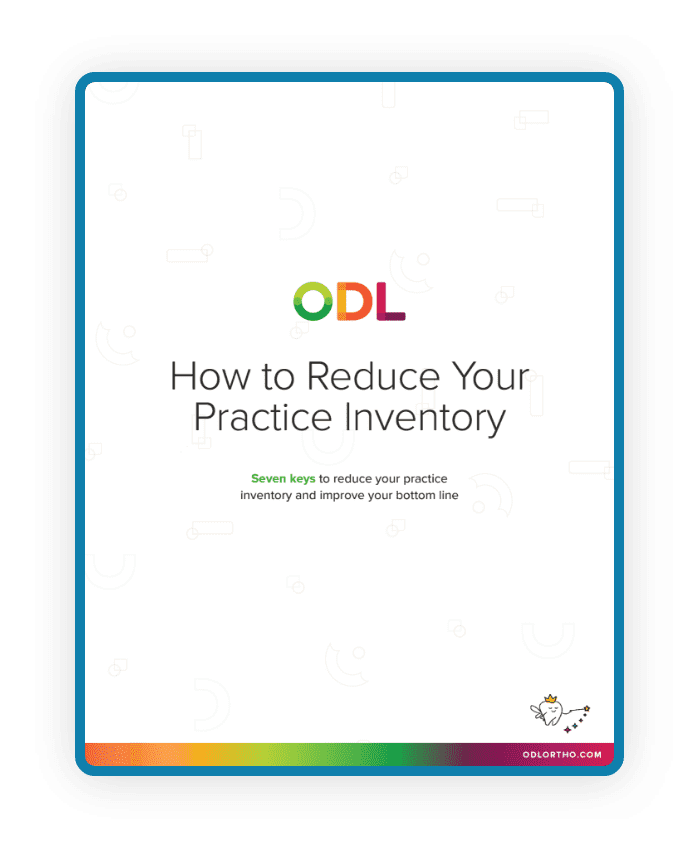What is lean manufacturing?
If you’re seeking to improve the efficiency and productivity of your practice, one of the best things you can do is learn the principles of lean manufacturing. While the term may sound heavily industrial, the concepts and strategies involved can significantly enhance the operations (and profit margins!) of your practice.
Lean manufacturing, originally developed by Toyota, is a systematic method designed to minimize waste within a manufacturing system while simultaneously maximizing productivity. The system identifies eight primary areas of waste, each of which is outlined below. Keep reading to learn what each of these types of waste are and how you can take steps towards eliminating them in your practice.
Understanding and Overcoming the 8 Wastes of Lean Manufacturing
1. Defects
In a dental/orthodontic context, this kind of waste translates to manufacturing defects in patient hardware. These defects not only result in increased costs, but they also damage your reputation.
Strategic Solution: The best thing you can do here is team up with a manufacturer whose reputation is built on precision and accuracy. When turnaround times are tight, no room for mistakes can be made. Also, keep a log of the frequency of faulty hardware you receive from your manufacturer so you have a clear idea on the average defect rate of equipment you receive.
2. Overproduction
Overproduction in a practice context typically means excessive ordering of supplies, but it could also look like overbooking patient appointments.
Strategic Solution: Adopt a just-in-time inventory system to order supplies as and when needed. Additionally, optimize your scheduling software and CRM to manage appointments efficiently, ensuring optimal usage of time and resources.
3. Waiting
Idle down time waiting for equipment sterilization, patient arrivals, and hardware deliveries negatively impacts the overall productivity of your clinic.
Strategic Solution: Manage time efficiently by scheduling equipment sterilization during off-peak hours, and implement kind yet strict policies to manage late or absent patients. Importantly, make sure your hardware manufacturer has guaranteed turnaround times and a policy in place to reimburse you should they miss your deadline.
4. Non-Utilized Talent
If your team members’ skills and potential aren’t fully tapped into, it’s a form of waste. Every team member brings unique skills and experiences that can be used to improve your practice.
Strategic Solution: Encourage staff participation in decision-making, and offer training programs to enhance different employee skills where applicable. Most importantly, create an environment that values and stimulates innovation, and reward your employees every time they go above and beyond to improve the way your practice operates.
5. Transportation
Unnecessary movement of supplies or personnel within your office can lead to waste of time and effort. Also, appliance manufacturers based too far away from your practice (and who don’t have guaranteed turnaround times) mean this point risks becoming a repeat of Point 3, Waiting.
Strategic Solution: Organize your practice for maximum efficiency. Keep frequently used supplies within easy reach, and design workflows that minimize unnecessary movement. The less back and forth, the better. Extra points if you nail down a supplier that is nearby and won’t be affected by larger regional or nationwide transportation delays!
6. Inventory
Excessive inventory results in wasted capital and storage space, and you also run the risk of supplies becoming obsolete or expiring. Extra inventory is a liability rather than an asset.
Strategic Solution: Regularly conduct inventory audits and adjust your ordering habits based on actual usage and needs. Ideally, implement Just-In-Time inventory management practices to increase your clinic’s efficiency.
7. Motion
Wasted motion refers to the unnecessary physical movements made by staff, such as looking for misplaced equipment or moving between work areas.
Strategic Solution: Implement a ‘5S System‘ (another Japanese concept) to optimize your workspace. The 5 S’s stand for Sort, Set in Order, Shine, Standardize, and Sustain. Together they help optimize your workspace, making it more efficient and reducing needless movement.
8. Extra-Processing
Extra-processing in a dental/orthodontic context might be seen as redundant paperwork or unnecessary procedures, which result in wasted time and effort.
Strategic Solution: Streamline administrative tasks, adopt digital records, and consistently review your procedures to eliminate redundancies. If a patient doesn’t need an extra appointment, there’s no need to book it.
The Impact of Lean Manufacturing Principles on Dental and Orthodontic Practices
In conclusion, embracing the principles of lean manufacturing can be a game-changer for your dental or orthodontic practice, leading to enhanced efficiency and improved profitability. By identifying and addressing the eight primary areas of waste within your operations, you can minimize defects, avoid overproduction, reduce waiting times, fully utilize your team’s talents, optimize transportation and inventory, eliminate unnecessary motion, and streamline administrative processes. Partnering with manufacturers known for precision and reliability, such as ODL, implementing just-in-time inventory systems, and encouraging a culture of innovation among your staff are essential steps in this journey. By continuously striving for leaner processes, you can not only elevate the quality of care you provide but also ensure the long-term success and sustainability of your practice.





